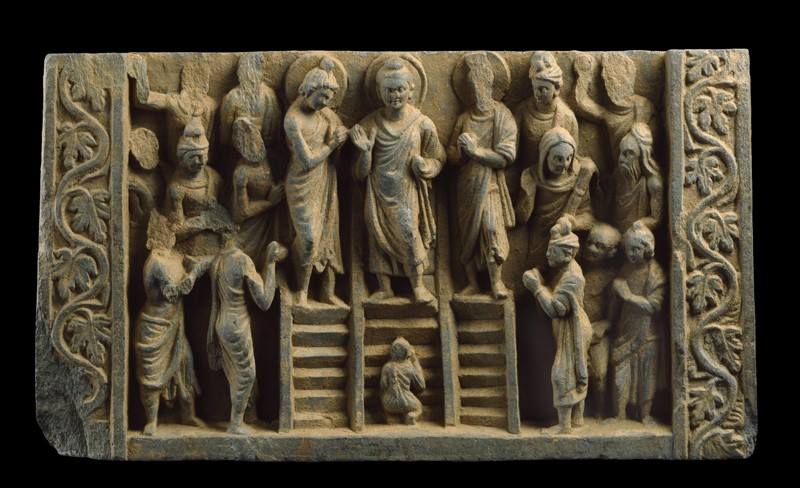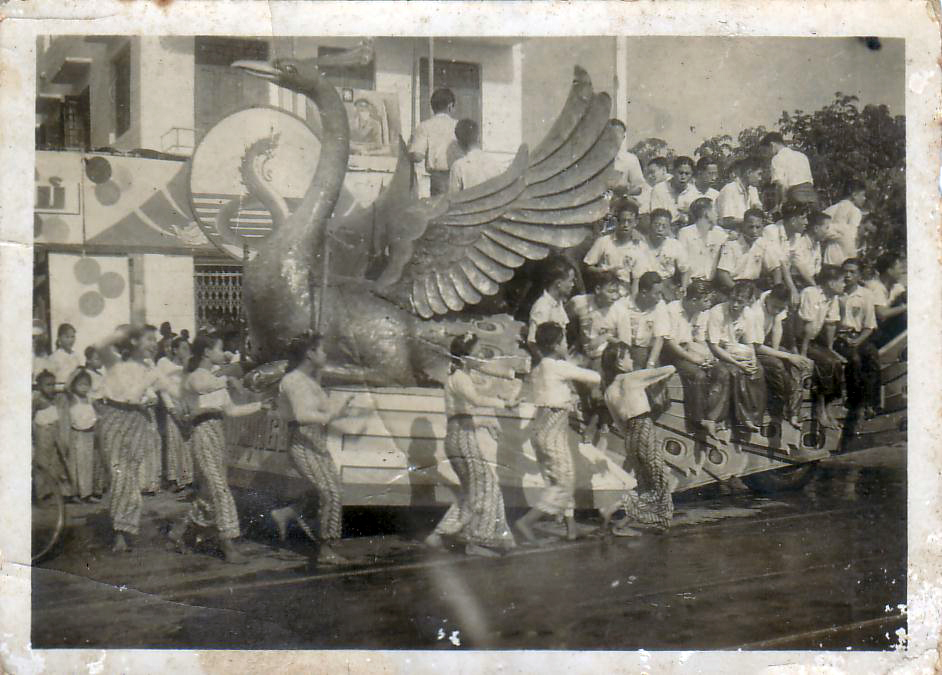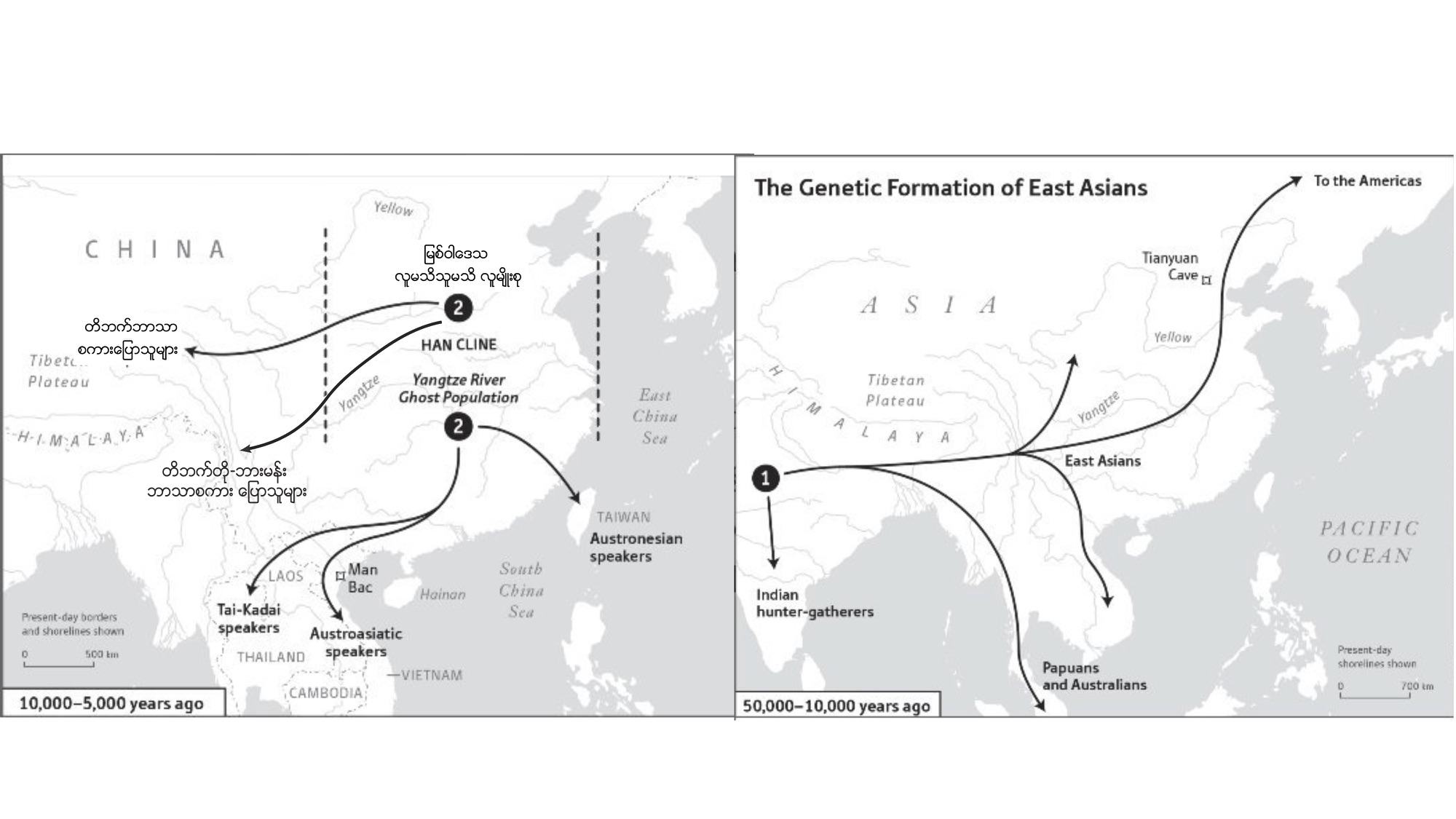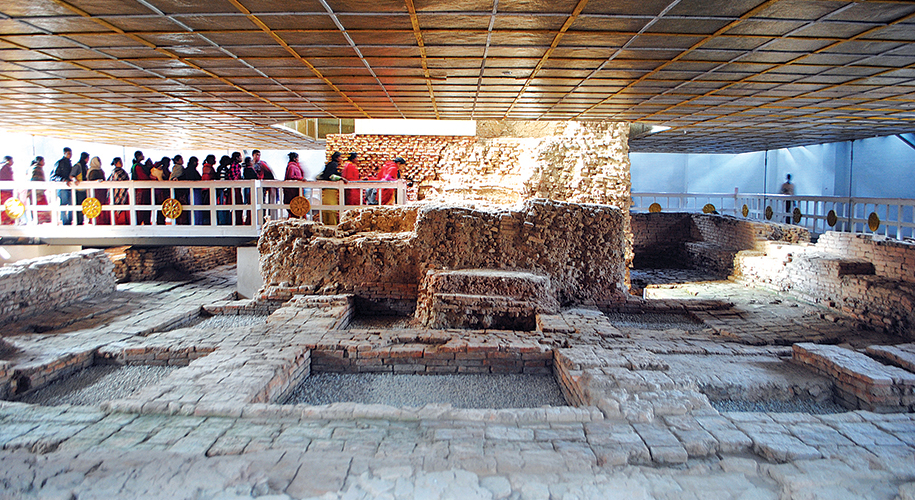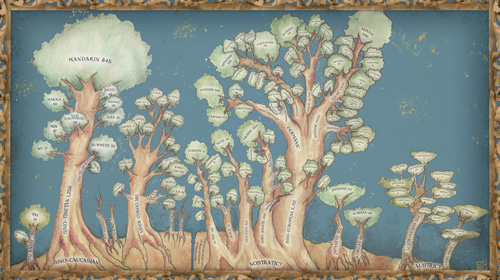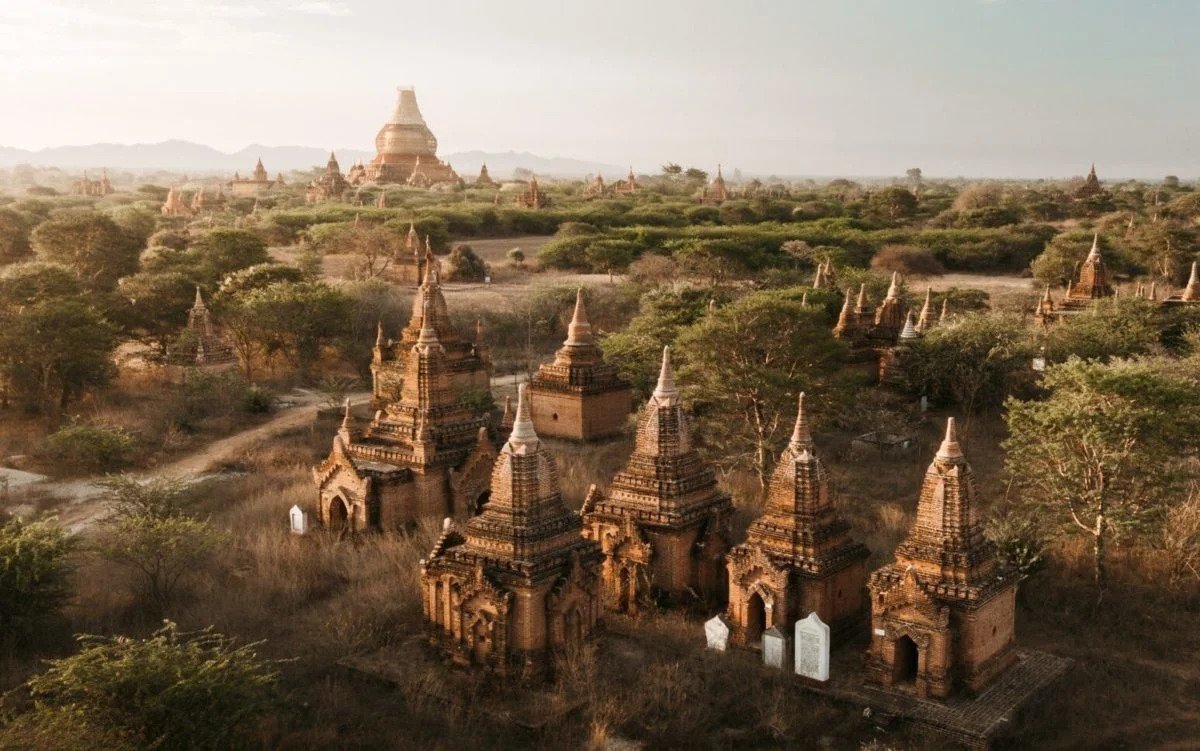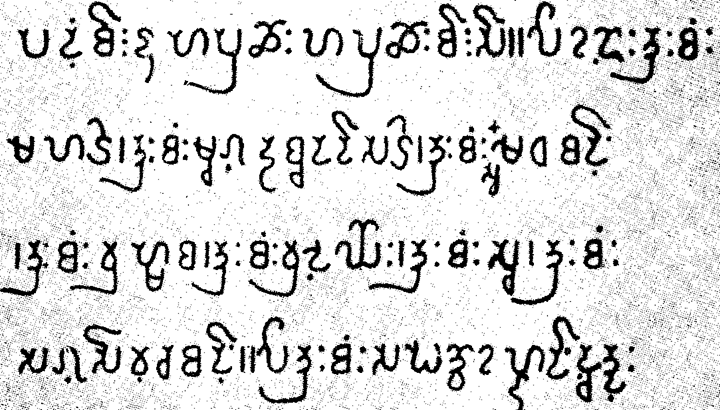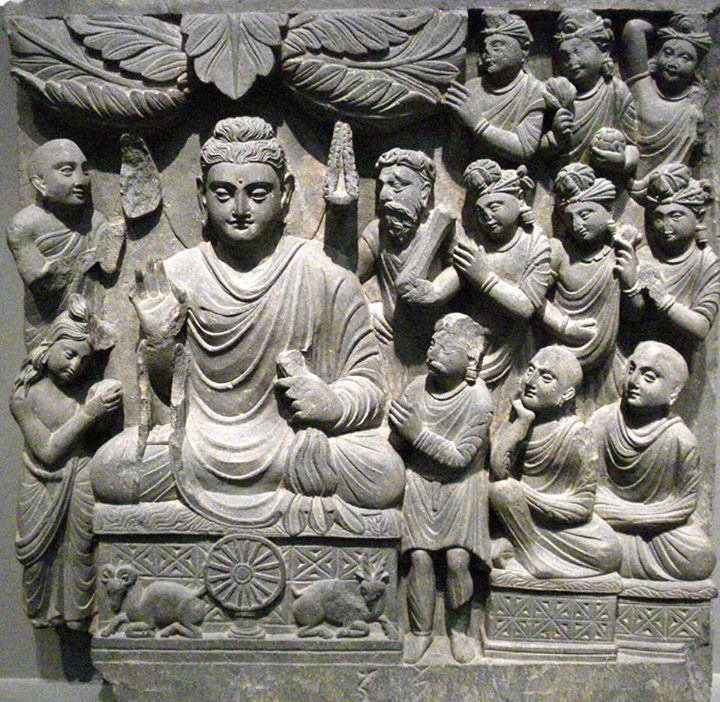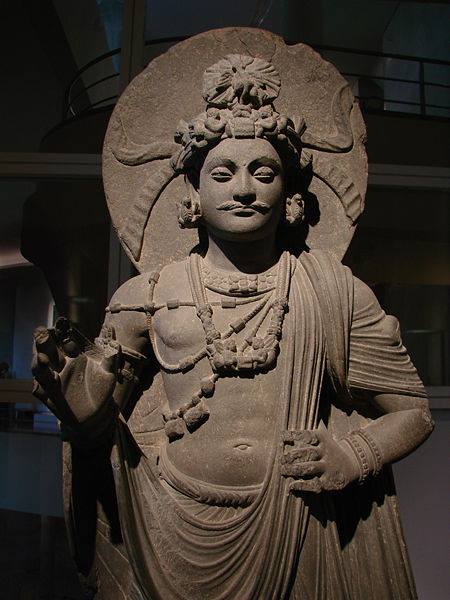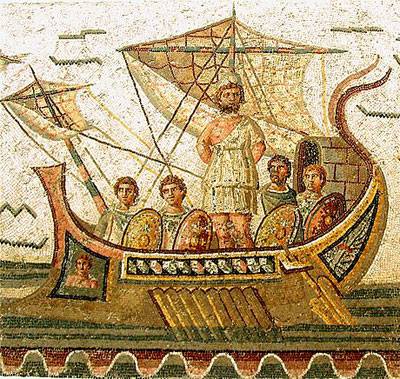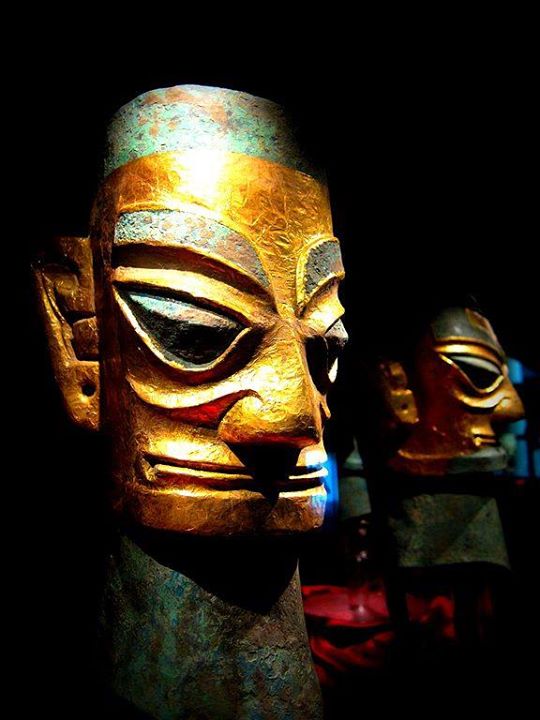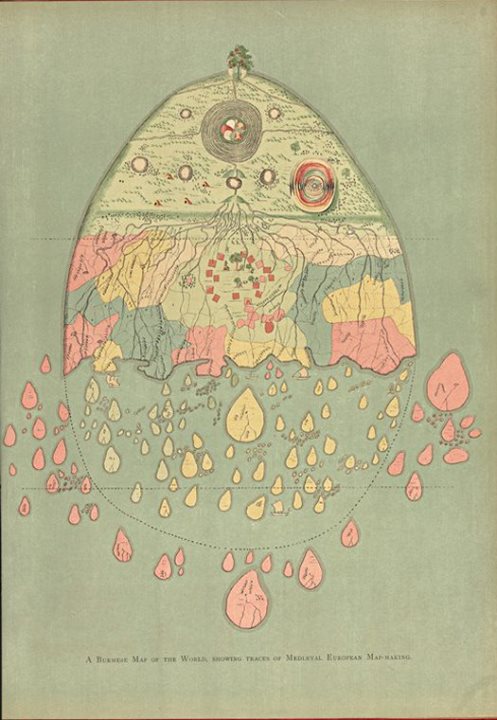Prehistory and Ancient History
The area that is today known as Myanmar was likely settled by archaic humans millions of years ago and by members of our species many tens of thousands of years ago as part of modern homo sapiens dispersal from Africa. Most people in Myanmar are descended from waves of migration from the near north, bringing Tibeto-Burman and other languages, but many are also descended from people who emerged from much further afield – Myanmar has long been a site of immigration and emigration and in the process has given rise to the complex mosaic of identities we have today.
Much of Myanmar prehistory and history before a thousand years ago has only been partially studied. From speculation on lost civilizations to the discovery of ancient human remains and the origins of rituals still practiced today, this section introduces some of what is known as well as ideas about all that remains to be discovered.
The Story of Thadingyut
Thadingyut marks the descent of the Buddha from the Trayastrimsa heaven of the 33 gods where he had gone to preach the Abhidharma (or 'higher teachings') for three months, including to Indra, Brahma, and his mother Maya who had been reborn there. This 3rd-century Gandhara sculpture (today at the Ashmolean museum at Oxford in the UK) shows the Gautama Buddha flanked by the Brahma and Indra descending down the triple stairway from the Trayastrimsa heaven. The nun Utpalavarna kneels in...
Read MoreThe meaning of Thingyan
The Burmese New Year is celebrated in the middle of April with the water-throwing festival known as "Thingyan". The festival's origins go back to the time of the Buddha and perhaps even before that. Thingyan (spelled saṁkran in Burmese) is derived from the Sanskrit word saṁkrānti, which is also the origin of the Thai word Songkran for the same new year festival in Thailand. Saṁkrānti means the day the sun moves from one rashi (constellation of the zodiac) to another. The...
Read MoreThe genetic history of the Burmese people
In recent years there has been a revolution in genetic science. Scientists are now able to unlock new information about humanity's distant past in a way that was impossible before. Over the coming years, much more information might be uncovered about the genetic history of Myanmar than is known today. This is a summary of what seems to be known so far: (Note: "Burmese" refers to the ethnic majority Burmese-speaking people of the Irrawaddy valley.) Anatomically modern humans (physically almost...
Read MoreLumbini: Birthplace of Buddha
The site of the Buddha’s birthplace was unknown for centuries. In 1896 a German archeologist discovered a pillar erected by the Emperor Asoka in the 3rd century BC to mark the place of the the Buddha's birth. The inscription on the pillar is a Prakrit language (similar to Pali) written in the Brahmi script. It is the first ever Indian writing. Asoka's inscriptions are also the very first written mention anywhere about the Buddha. (The earliest Buddhist scriptures still in...
Read MoreLanguage Tree
Since the 1500s European visitors to India noticed the similarities between most European and many Indian languages. In 1786 the scholar and jurist Sir William Jones, in a lecture at the Asiatic Society of Bengal in Calcutta, first proposed that many of the oldest languages in both Europe and Asia (including Greek, Latin, Persian, and Sanskrit) were so similar that they must have stemmed from a common source. The word "Indo-European" was later developed to describe what was seen as...
Read MoreAre we Partly Non-human?
In 2010, scientists learned that a species of archaic humans lived in Asia until about 20,000 years ago. They are now known as the Denisovans. The DNA of Denisovans was extracted from their remains, found in a cave in Siberia. They are cousins of the Neanderthals, another archaic human species, who lived in Europe during the last Ice Age. They are very distant cousins of modern humans who emerged from Africa and entered Asia around 60,000 years ago. Now scientists...
Read MoreThe History of Pagoda Slaves
So-called pagoda slaves or paya kyun have a long history in Burma/Myanmar. The first pagoda slaves were the descendants of war captives seized in the expansionist wars of the 12th century Bagan Empire. (In pre-modern Southeast Asia, land was plentiful, but labour was scarce, so wars were often fought to secure people rather than places). According to the inscriptions in Bagan, vast numbers of conquered peoples were donated by victorious kings for the maintenance of pagodas and shrines. Their work included...
Read MoreThe Pyu script
Myanmar's three 1st millennium cities - Hanlin, Beikthano, and Sri Ksetra - were named a UNESCO World Heritage Sites in 2014. The remains of these walled-and-moated cities have been partially excavated and include Buddhist stupas, palaces, cemeteries, early manufacturing sites, and agricultural irrigation features (some of which are still in use today). This photo shows an example of the Pyu script, which is a variant of the Pallava script of South India. According to UNESCO these three ancient cities offer...
Read MoreFull Moon of Waso
Waso is the fourth month of the traditional Burmese lunar calendar (coinciding roughly with July). It signals the beginning of Vassa or the Buddhist Lent, during which monks retreat to their monasteries and certain ceremonies - like weddings - cannot be performed. This image shows one of the very first depictions of the Buddha's First Sermon at the Deer Park in Sarnath given on the day of the full moon. This carving comes from the Indo-Greek kingdom of Gandhara (today...
Read MoreWhy do the Burmese name their eras after the Sakas?
Burmese refer to eras as thekkarit (သက္ကရာဇ်) which is from the Indian saka-raj. Saka-raj simply means the "Saka king". The Sakas or Indo-Scythians were a central Asian people who dominated parts of what are today Pakistan and northern India around 2,000 years ago. The Sakas were related to steppe peoples known collectively to the ancient Greeks as Scythians. They were also heavily influenced by the culture of Greco-Indian kings who preceded them. Their most famous king was the great Buddhist...
Read MoreRomans in Myanmar?
In 121 AD an embassy crossed into the Chinese Han Empire from what is today Myanmar and was taken to the then capital Luoyang. The embassy may have been from a Myanmar ruler, but may also have come from further west. The embassy was accompanied by a troupe of entertainers, including jugglers and acrobats, who performed at the Han imperial court. The Chinese were intrigued by the outlandish entertainers and learned that they were Roman subjects. It is not known...
Read MoreThe lost civilisation of Sanxingdui
The mysterious civilization of Sanxingdui, first discovered in the 1980s, is still very little understood as any written records are yet to be found. Sanxingdui and the surrounding region may have been a cradle for peoples speaking Tibeto-Burman languages (including languages ancestral to Burmese, Jingpo, Naga, Zomi,etc.) It was a 2nd millenium BC civilization that existed the same time as the Shang dynasty in China, New Kingdom of Egypt and ancient Babylon. Sanxingdui is in what is today Sichuan (in...
Read MoreJambudipa
This "Burmese Map of the World" shows Jambudipa or the island that is home to all human-kind. Jambu refers to a black plum (Syzygium cumini), which is commonly known as the Malabar or Java plum. In Buddhist, Hindu, and Jain cosmology, Jambudipa (or Jambudvipa in Sanskrit, Zambudipa in Burmese) is the southernmost of four continents; the others are not accessible to human beings. Mount Meru stands at the centre of all four. On this map of Jambudipa, there is a...
Read More